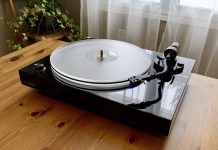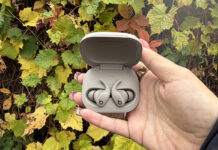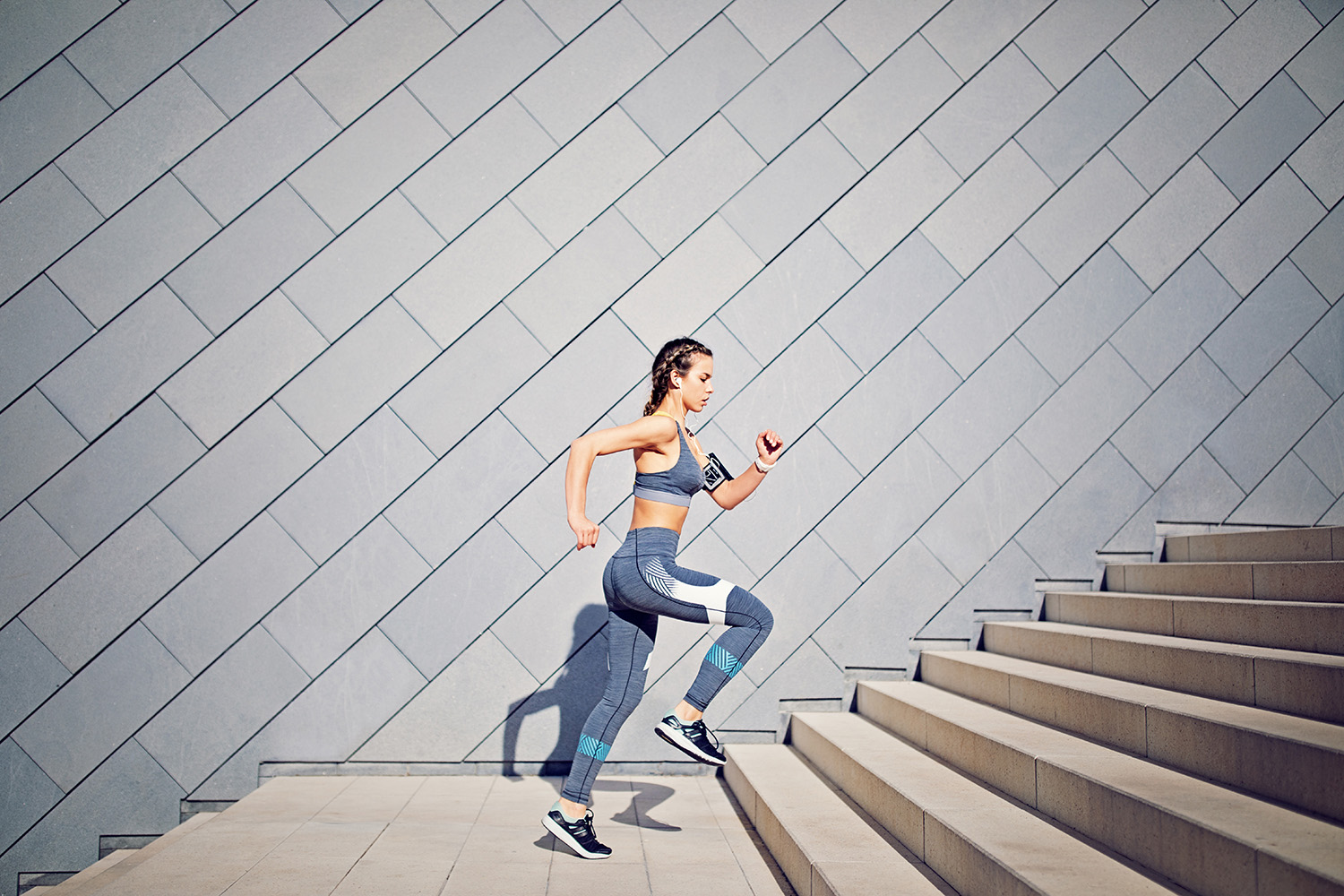
Running is a popular way to get in shape and focus on health and well-being. Whether you’re training for a 5K, 10K, or a marathon, there are a lot of health tech products and wearables that are perfect for runners. Whether you’re training for a 5K or 10K, you’re a novice runner, or just like to go for a leisurely jog every morning to clear your head, tech accessories can make the experience more enjoyable and even help you improve and recover.
Here, we’ll walk you through some of the most exciting running accessories’ categories and how they can be valuable before, during, and after your run.
Table of contents
- Tracking your progress
- Accessories to entertain and motivate you
- Managing health at home
- Focus on fueling your body
- After-run recovery
Tracking your progress
Even if you’re only running for fun, it’s still worthwhile to be able to see your stats at the end, like running route, heart rate, number of steps, active minutes, or all the above. And there are a variety of devices that can help you do that.
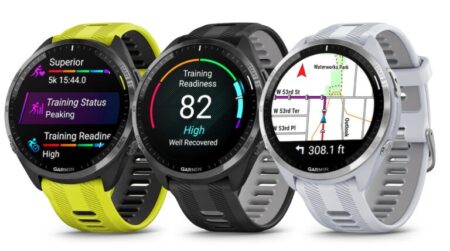
Smartwatches and fitness trackers
There are tons of smartwatches and fitness trackers available from top brands like Fitbit, Garmin, Samsung, and others. Some fitness trackers and smartwatches, like ones in Garmin’s Fenix and Forerunner lines, have features that specifically appeal to serious runners. They can track things like cadence, pace, and even provide access to trail maps. But if you’re just getting into running and not looking to spend a fortune on a device that can track every stat under the sun, most fitness trackers and smartwatches will do the trick.
What to look for in a smartwatch or fitness tracking for running
Built-in GPS
With built-in GPS on a smartwatch or fitness tracker, you can pop out for a run without bringing your smartphone with you. The device will still track your route, then sync with the app when you get home. If the device has connected GPS, that means it can still track your route, but only when you bring your phone with you. Built-in GPS is a valuable feature for runners who want to reduce weight by leaving the phone at home and want to keep track of what paths and trails they take, especially in unfamiliar terrain.
Third-party app support
Consider getting a fitness tracker or smartwatch that can work with third-party apps, like Strava, which is a favourite among runners. This can help provide more robust route, distance, and stats tracking. While you might not use one of these apps to begin with, you may decide to do so in the future. So, if your smartwatch or fitness tracker can integrate that data in a single app, it makes for a seamless experience.
Music storage
A bonus is if the smartwatch can store music and pair directly with wireless headphones (more on those in the next section). This allows you to listen to tunes, with or without your phone. This also means you don’t have to stream over a cellular connection, thus conserving data.
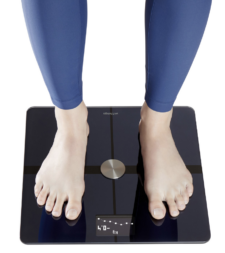
Smart scales
Smart scales can help you monitor progress over time. And many of them don’t report just weight but other useful data as well, like body mass index, muscle mass, and percentage body fat. Weigh yourself every morning (ideally naked, after going to the bathroom and before showering) to get the most accurate stats. Smart scales keep the captured data logged in an app. Learn more about what smart scales can do in our smart scales buying guide.
What to look for in a smart scale
App integration
Some smart scales can communicate with a smartwatch or fitness tracker app as well as its own. Fitbit has its own line of Aria smart scales, for example, while some Withings smart scales pair with the Apple Watch so you can view data in the Apple Health app and vice versa with the Withings app.
Additional stats
In addition to measuring weight, many smart scales track things like muscle mass, body fat percentage, even water mass and lean versus fat mass, metabolic rate, and more. Find one that measures plenty of stats, or the ones most important to you, and presents them all in an easy-to-read app.
Multiple users
Most smart scales allow you to load multiple users and can even detect whose standing on top based on your weight and body composition. This makes it easy to integrate the scale into the home so everyone in the family can use it but you can focus on tracking your own personal stats in the app.
Treadmill
Living in Canada, running isn’t always ideal outdoors. If there’s heavy rain, a snowstorm, or frigid temperatures, you might be dissuaded from venturing outdoors. For some, it’s tough to get outside frequently to go for runs due to busy schedules or babies to care for. This is where a treadmill can come in handy. You can still get in a good run without ever leaving the house. And you can do it any time of the day or night. Track your progress at home with your fitness tracker, just as you would with an indoor run (many have a dedicated treadmill option under sports you can track). Learn more about the features and benefits of a treadmill in our fitness equipment buying guide.
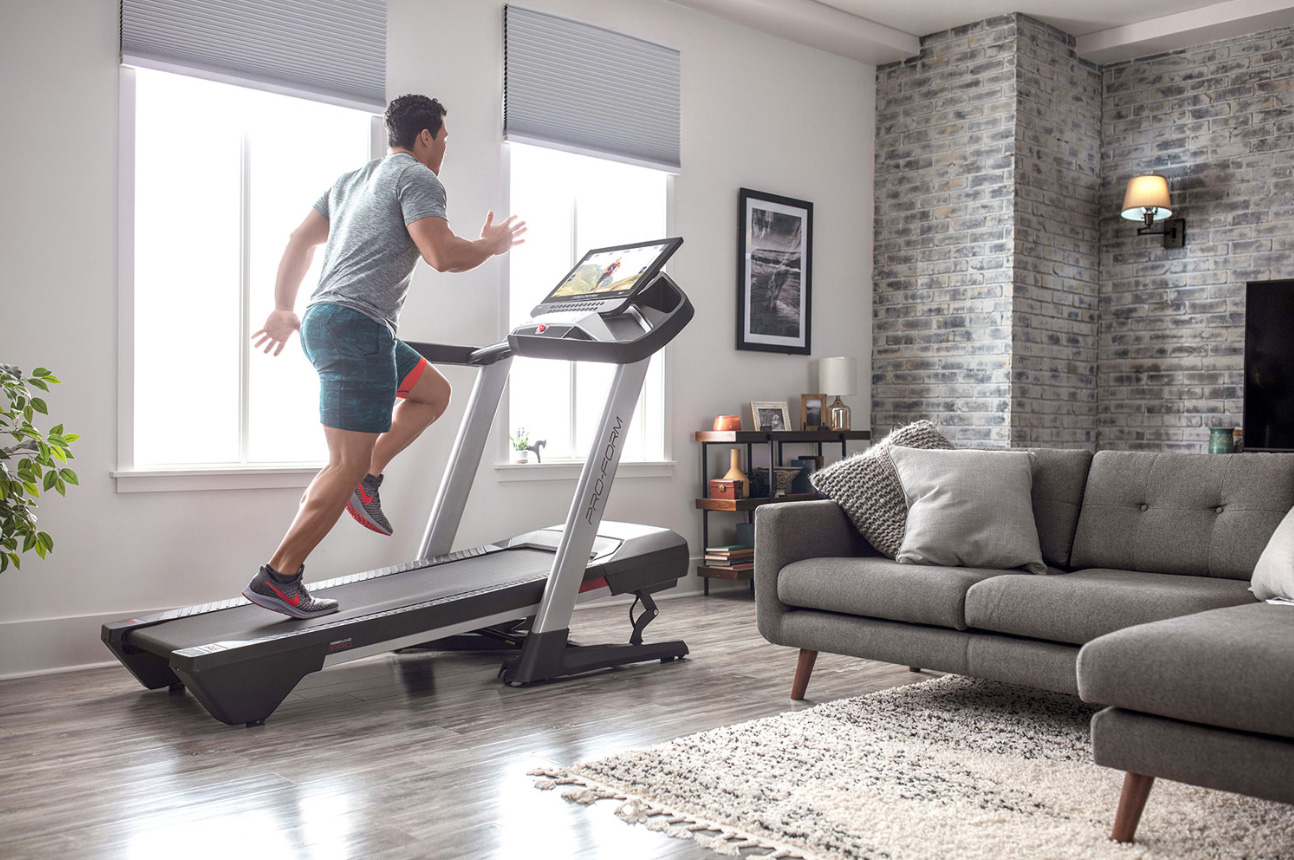
What to look for in a treadmill
Built-in display
Look for one that has a screen or a mount for your phone or tablet so you can view data in real time, including speed, distance, calories burned, and heart rate.
Size
If you’re reluctant because you don’t have the room in your home for one, considering a more compact treadmill, or one that can fold up and be tucked away in a corner to take up less space when you aren’t using it.
Speed and incline
If you are a pretty good runner, you’ll want to be challenged at home just as you are outside. This means you’ll want a treadmill with multiple speeds that can meet your usual pace. You might also want various incline levels if you’re used to running outside where there are inclines and hills on the path that further challenge you. Make sure the options will suit your needs so your runs at home can mirror those on the go.
Membership trials
Some of the latest treadmills come with trial memberships to fitness classes led by experts, which can help guide you. This is useful if you plan to do a lot of treadmills runs from home.
Accessories to entertain and motivate you
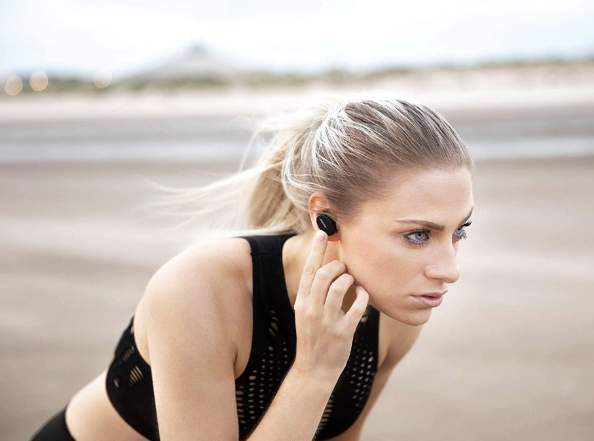
Walks, runs, workouts, and exercise of any kind always go by much faster with music. And having a good playlist that has upbeat songs can help you keep the pace as you run. There are a few options that are perfectly suited to runners worth considering.
Headphones
Truly wireless earbuds
Truly wireless earbuds, also known as true wireless earbuds, pop right into your ears and connect wirelessly to a mobile device so you can listen to tunes on the go, free of wires. These make running comfortable without adding any bulk or weight. This is crucial for runners who are trying to beat personal records or engage in serious training.
Sports headphones
If you’re not a fan of true wireless earbuds, you can also get earbuds or headphones that are designed specifically for use while doing rigorous activity, like running. They’ll typically be named sports headphones and while many of them are of the true wireless kind, you can get other styles, too. Some sit on the ears with hooks that wrap around the lobes while others use bone conduction technology and actually wrap around your neck.
Open-ear headphones
Last but not least, open-ear headphones are a popular choice for runners who prefer to stay alert to their surroundings while enjoying their favourite tunes or podcasts. Unlike traditional models, open-ear headphones do not sit inside the ear canal but rather rest on the outer ear. This design allows ambient sounds to filter through, which is crucial for runners who need to stay aware of their surroundings, particularly when running near traffic or in busy areas. They also prevent discomfort that can arise from sweat accumulation under tight-fitting earbuds, so you can focus on your performance.

What to look for with running headphones
Waterproof or sweat-proof design
Make sure they are waterproof or at least sweat-proof so they can withstand some rain or a sweaty running session and won’t get damaged. Some can even be rinsed clean when you’re done.
Direct connection to a smartwatch
As noted above, if you have a smartwatch with Bluetooth and music storage, you’ll love being able to leave the phone at home and pair headphones directly to the watch itself.
Varying noise isolation features
If the headphones are sound isolating, that’s great. But if you’re running, especially on your own, it’s good to find a pair that has a feature that lets you hear your surroundings more clearly when needed. Some have varying levels of noise cancellation so you can let in some sounds if you’re on a quiet trail, more sounds if you’re on a busy street and need to be aware of your surroundings, or full noise isolation when you’re navigating a familiar area.
Battery life
Good battery life is helpful so you don’t have to recharge daily. True wireless earbuds come with charging cases that can recharge them for several cycles before the case itself needs recharging, easily lasting for a week (or longer) worth of running sessions.
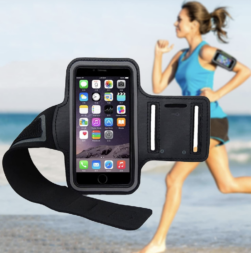
Phone armband or belt
If you are bringing your phone with you, a phone armband case is a great accessory that keeps your phone on your body without jostling around in your pocket. If you’re using your phone as a music or podcast source, these make it easy to bring one with you. Some even have slots to hold earbuds or the earbuds charging case. They typically fit using Velcro and either come in universal sizes or fitted to a specific phone. Alternatively, you could also consider a running belt, which has a slot to secure your phone as well as other accessories, like your house key or a credit card if you want to stop at the local juice shop for a protein shake.
Managing health at home
There are other devices you can use to manage your health at home, both before and after your run.
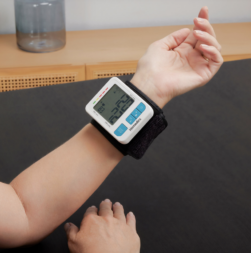
Blood pressure monitors
It’s always a good idea to keep tabs on your blood pressure, especially if you have issues with high or low blood pressure. A blood pressure monitor at home makes this simple as you can simply wrap it around your arm (some even go around the wrist), press a button, wait, and get a reading within seconds. There are lots of options, all of which are super easy to use.
Chest heart rate monitor
A chest heart rate monitor can keep track of your heart rate not only before and after a run but also during. Most smartwatches and fitness trackers include heart rate sensors, eliminating the need to wear a chest strap. But some runners believe chest straps are more accurate and like to wear these as well.
Pulse oximeter
To check your blood oxygen levels and lung health, use a pulse oximeter. Slide your finger into the little grip and you’ll get a reading instantly that will let you know your levels. There are even personal EKG monitors you can get that take an EKG reading from your fingers to detect potential atrial fibrillation, bradycardia, or tachycardia that might impact your running habits. Many premium smartwatches and fitness trackers include this feature as well, but you might find having a dedicated, secondary device useful.
Sleep tech devices
Once again, smartwatches and fitness trackers often monitor your sleep duration and quality. But there are other sleep tech devices that can come in handy. For example, an anti-snoring sleep mask would be great for not only monitoring your sleep quality in the morning by analyzing the data in the app each morning, but might also prevent you from snoring in the first place.
Focus on fuelling your body
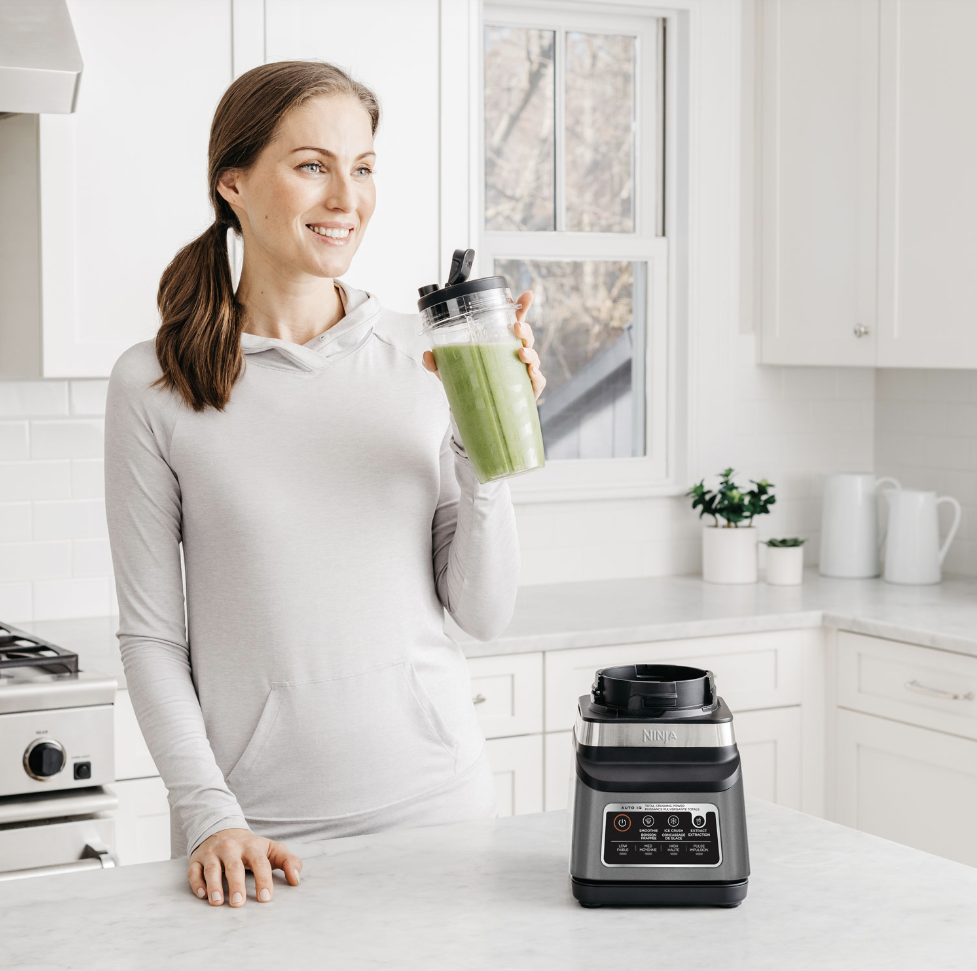
Runners know that a big part of ensuring a successful run is having the right fuel to drive you and replenish you when you get home. And that often involves healthy smoothies or fresh juices to revitalize you, rehydrate, and provide plenty of essential nutrients.
Blenders
If you love smoothies, a blender is a must. But they aren’t just great for after-run smoothies. You can also use them to prepare healthy snacks, like homemade hummus dip or pesto sauce for zucchini noodles. There are countless things you can do with a blender. And for runners who love to go for a quick run in the morning, they are perfect for making a quick breakfast replacement smoothie while you cool down from an intense 5K.
If you don’t need, or have room, for a full-sized blender and you’ll only use it for your own personal-sized smoothies anyway, consider a personal blender, which is not only smaller in size but many of them come with lids and handles so you can drink right out of the same cup you blended in.
See our blenders and juicers buying guide for help in choosing the right one for you.
Juicers
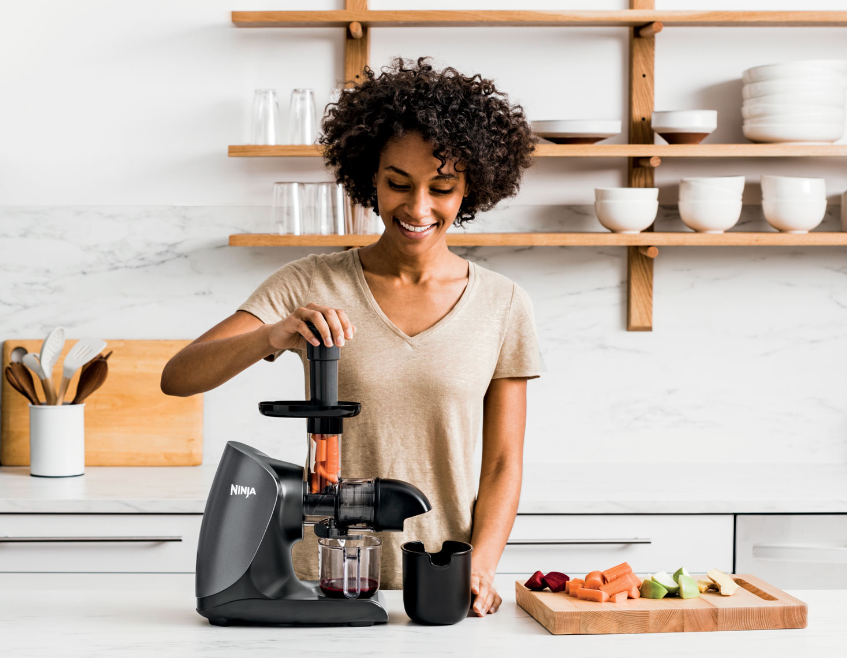
Some runners might prefer fresh-squeezed juice, which is a great way to get much-needed vitamins and nutrients from fruits and vegetables. There are different types of juicers to choose from, including centrifugal, masticating, juice presses, and citrus juicers.
The most popular type of juicer is the centrifugal juicer, which lets you insert different types of fruits and vegetables down a chute while a spinning metal blades presses them against a strainer to extract all of that juicy goodness. Drink a glass on ice after a good run or have one with lunch to ensure you get your daily recommended servings of fruits and vegetables. If you want to make large batches of fresh-pressed juice to keep in the refrigerator and drink from after every daily run, consider investing in a masticating juicer instead. They can be more expensive and larger and generally take longer to get juice from smaller pieces of fruits and vegetables. But if you want to dedicate each Sunday to prepping your juice for the week, it might not matter.
Note that there’s also bluicers that, as the name implies, combine the features and functions of both a blender and a juicer.

After-run recovery
A big part of running is the recovery afterwards. But not everyone has time to soak in an Epsom salts bath for an hour while they let their joints, muscles, and skin heal. There are a few things you can do to help ease the muscles in especially your legs, but every part of your body that the run might have put to work.
Massage guns
Handheld massagers, also known as massage guns, provide percussive massaging of your muscles as you run them over the sorest points. Find one that provides customized therapy with different levels of intensity and even attachments to target different body parts, from shoulders to, most likely for runners, thighs.
Foam rollers
Another useful fitness recovery device is a foam roller, which can help ease your sore and tight muscles after a run. They can also be used before a run to help warm up your muscles and release any pain points before you get started.
Take the next step
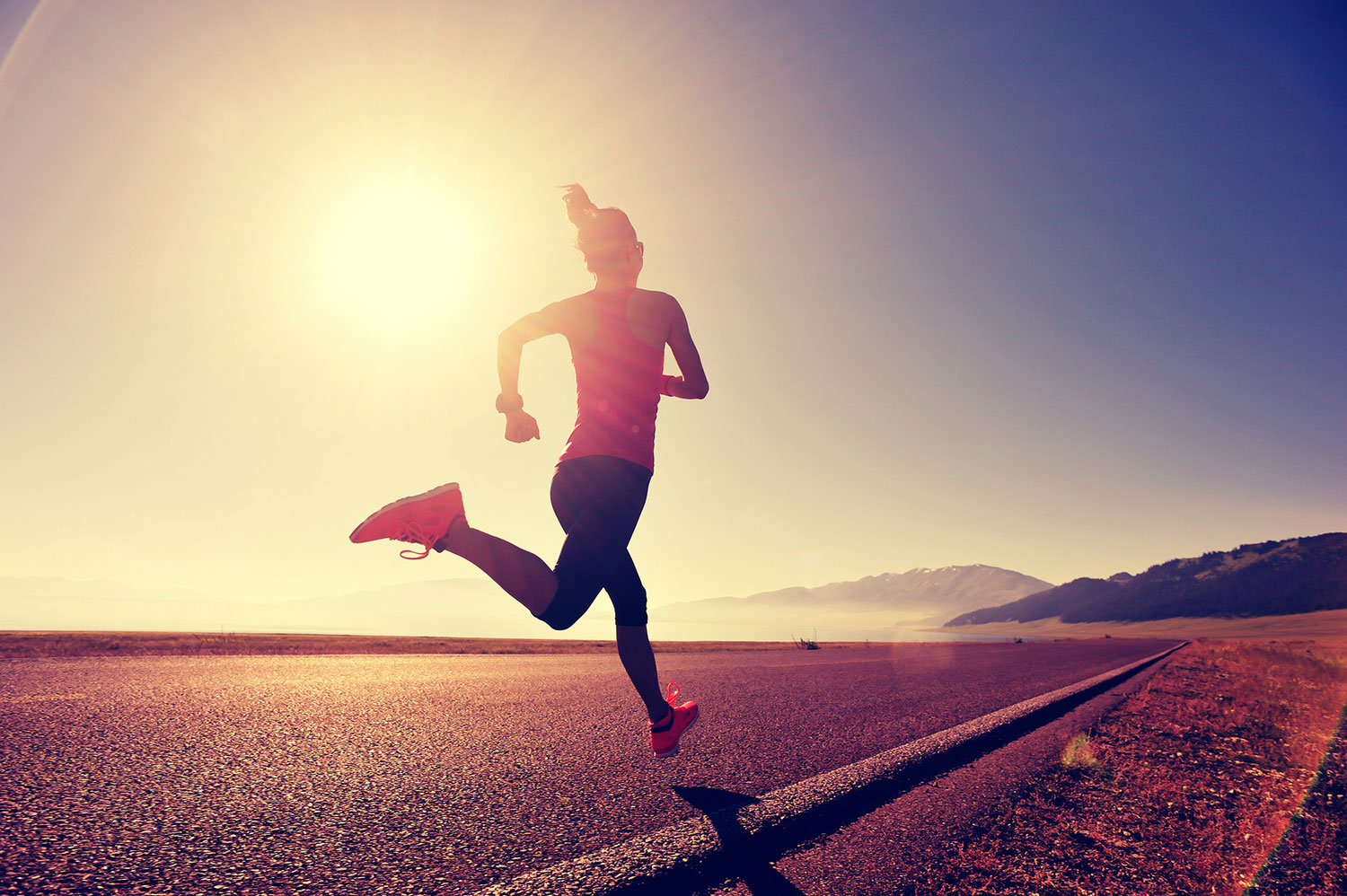
From the time you pop those running shoes on to the moment you rest up for bed, check out plenty of great health tech items at Best Buy online that are perfect for runners of all kinds, from novices to 10K pros.




